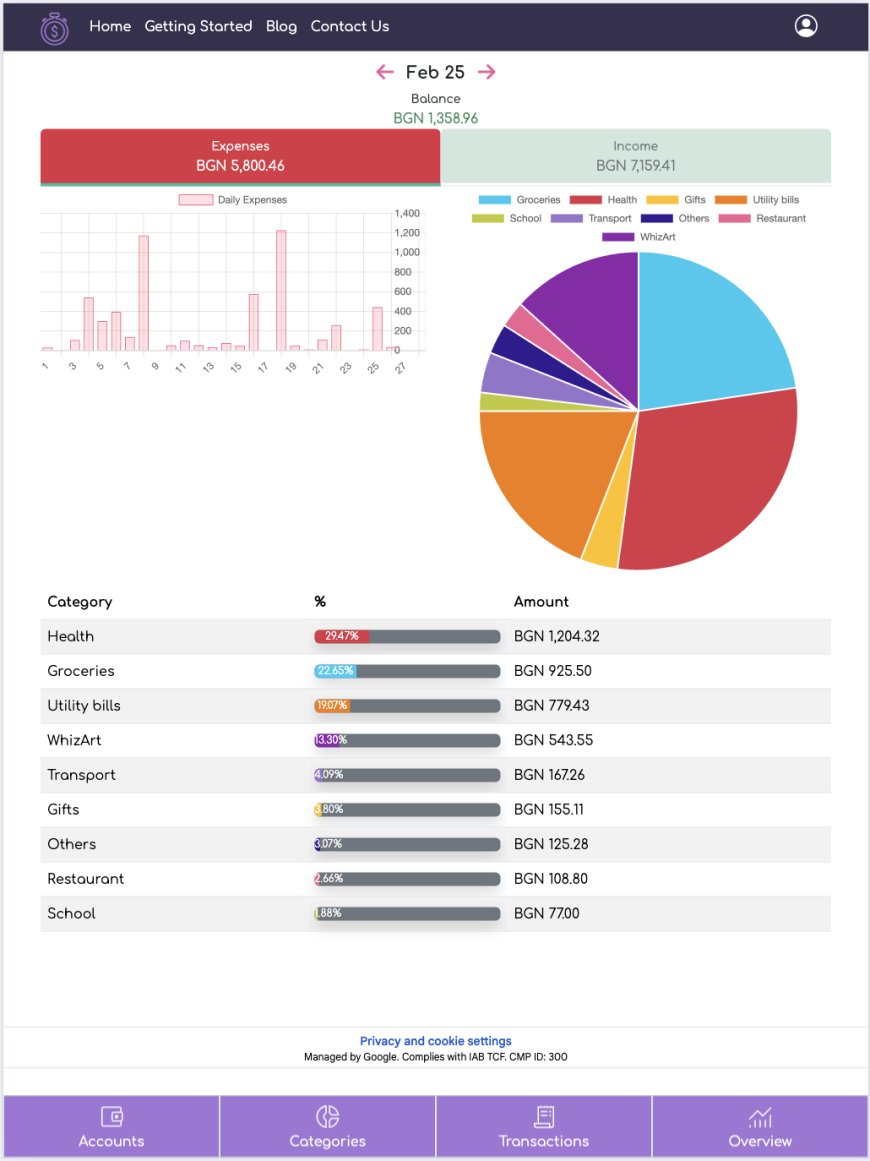Financial Modeling for Startups: A Comprehensive Guide
Financial Modeling for Startups: A Comprehensive Guide In the dynamic world of startups, financial modeling plays a crucial role in

Financial Modeling for Startups: A Comprehensive Guide
In the dynamic world of startups, financial modeling plays a crucial role in driving informed decision-making, securing funding, and charting a path to success. Whether you're a first-time entrepreneur or a seasoned business leader, mastering the art of financial modeling is essential for navigating the challenges and opportunities that come with building a new venture. In this comprehensive guide, we'll explore the key principles, techniques, and best practices of financial modeling for startups, equipping you with the knowledge and tools to thrive in the competitive startup landscape.
Understanding the Importance of Financial Modeling for Startups
Financial modeling is the process of creating a representation of a company's financial performance, using historical data, assumptions, and projections to forecast future outcomes. For startups, this powerful tool serves as a roadmap, helping entrepreneurs make informed decisions, attract investors, and plan for growth.
At its core, financial modeling enables startups to:
- Evaluate Feasibility: By creating detailed financial projections, startups can assess the viability of their business model, identify potential risks, and make data-driven decisions about their operations and growth strategies.
- Secure Funding: Investors and lenders often require comprehensive financial models to evaluate the potential of a startup and make informed funding decisions. A well-constructed financial model can be the key to securing the necessary capital to launch and scale a new business.
- Optimize Resource Allocation: Financial modeling allows startups to allocate resources efficiently, prioritize investments, and make strategic decisions about hiring, marketing, and other operational aspects of the business.
- Monitor and Adapt: Ongoing financial modeling enables startups to track their performance, identify trends, and make timely adjustments to their strategies in response to changing market conditions or new opportunities.
By embracing financial modeling, startups can navigate the complexities of their industry, make informed decisions, and increase their chances of long-term success.
Key Elements of a Comprehensive Financial Model for Startups
A well-designed financial model for a startup should include the following key elements:
1. Revenue Projections
Accurately forecasting revenue is a critical component of any financial model. Startups should consider factors such as market size, customer acquisition rates, pricing strategies, and sales projections to develop realistic revenue estimates. This may involve conducting market research, analyzing industry trends, and incorporating historical data (if available).
Example: A SaaS startup might base its revenue projections on the number of expected monthly active users, average revenue per user, and anticipated growth rates in user acquisition and retention.
2. Expense Projections
In addition to revenue, startups must also account for their expenses, including cost of goods sold, operating expenses, and capital expenditures. This may involve estimating the costs of materials, labor, marketing, rent, and other operational expenses, as well as any investments in equipment, technology, or infrastructure.
Example: A hardware startup might project its expenses based on the cost of raw materials, manufacturing, logistics, and research and development, as well as the anticipated costs of setting up a production facility and hiring a skilled workforce.
3. Cash Flow Projections
Cash flow is the lifeblood of any startup, and financial modeling should include detailed projections of the company's cash inflows and outflows. This involves estimating the timing and amounts of revenue receipts, supplier payments, payroll, and other cash-related activities to ensure the startup maintains a healthy cash position and can meet its financial obligations.
Example: A food delivery startup might project its cash flow based on the timing of customer payments, vendor payments, and the costs associated with food procurement, packaging, and delivery logistics.
4. Balance Sheet Projections
The balance sheet is a snapshot of a company's financial position, including its assets, liabilities, and equity. Startups should incorporate balance sheet projections into their financial models to track the growth and health of their business, as well as to assess their ability to secure financing and manage their debt obligations.
Example: A biotech startup might project its balance sheet based on the value of its intellectual property, research and development investments, and any funding or loans it has secured to finance its operations.
5. Financing and Funding Needs
Startups often require external funding to finance their operations and growth. Financial modeling should include projections of the startup's financing needs, including the timing and amount of funding required, as well as the terms and conditions of any loans or investments.
Example: A tech startup might project its funding needs based on the capital required for product development, market expansion, and hiring a skilled workforce, and then model the impact of different financing scenarios, such as venture capital investments or a series of funding rounds.
6. Key Performance Indicators (KPIs)
Startups should identify and track relevant KPIs that align with their business objectives and financial goals. These may include metrics such as customer acquisition cost, customer lifetime value, burn rate, and runway. Incorporating KPIs into the financial model can help startups monitor their performance, identify areas for improvement, and make data-driven decisions.
Example: A subscription-based startup might track KPIs like monthly recurring revenue, churn rate, and customer acquisition cost to evaluate the health and growth potential of its business model.
Best Practices for Financial Modeling in Startups
To ensure the effectiveness and accuracy of your startup's financial model, consider the following best practices:
1. Start with a Clear Business Plan
Before diving into financial modeling, it's essential to have a well-defined business plan that outlines your startup's value proposition, target market, competitive landscape, and growth strategy. This foundational information will inform the assumptions and projections you incorporate into your financial model.
2. Identify Key Drivers and Assumptions
Carefully identify the key drivers of your startup's financial performance, such as customer acquisition, pricing, and operational costs. Develop realistic assumptions for these drivers based on market research, industry benchmarks, and your own business expertise.
3. Maintain Flexibility and Adaptability
Financial models should be designed with flexibility in mind, allowing you to easily update assumptions and projections as your startup's circumstances change. Regularly review and update your financial model to ensure it remains aligned with your evolving business goals and market conditions.
4. Incorporate Scenario Analysis
Conduct scenario analysis to stress-test your financial model and understand the potential impact of different market conditions, competitive threats, or operational challenges. This can help you identify and mitigate risks, as well as explore opportunities for growth and optimization.
5. Seek Feedback and Validation
Engage with experienced finance professionals, industry experts, and potential investors to review and validate your financial model. Their feedback can help you refine your assumptions, identify blind spots, and strengthen the overall credibility of your financial projections.
6. Automate and Streamline
Leverage Excel or specialized financial modeling software to automate calculations, create dynamic links, and streamline the process of updating your financial model. This can save time, reduce the risk of errors, and make it easier to generate reports and visualizations.
Case Studies: Financial Modeling in Action
Case Study 1: Airbnb's Financial Modeling Approach
Airbnb, the disruptive vacation rental platform, is known for its data-driven approach to decision-making. In the early days of the company, the Airbnb team developed a comprehensive financial model that incorporated detailed projections of revenue, expenses, and cash flow. By modeling different growth scenarios, Airbnb was able to identify the key drivers of its business and make informed decisions about expansion, pricing, and marketing strategies.
One of the critical elements of Airbnb's financial model was the ability to track and forecast the company's customer acquisition costs, which were a significant factor in its profitability. By closely monitoring these costs and adjusting their marketing efforts accordingly, Airbnb was able to maintain a healthy customer acquisition funnel and drive sustainable growth.
Airbnb's financial modeling efforts also played a crucial role in securing funding from investors. The company's detailed financial projections, along with its ability to demonstrate a clear path to profitability, helped it attract significant investment and fuel its global expansion.
Case Study 2: Dropbox's Financial Modeling for Fundraising
Dropbox, the popular cloud storage and file-sharing platform, relied heavily on financial modeling to support its fundraising efforts. As the company grew, it needed to secure additional capital to fund its expansion and maintain its competitive edge in the market.
Dropbox's financial model incorporated detailed projections of user growth, revenue streams (including both free and paid tiers), and the costs associated with infrastructure, customer support, and other operational expenses. By modeling different funding scenarios, Dropbox was able to demonstrate to investors the potential impact of their investments and the company's path to profitability.
One of the key insights from Dropbox's financial modeling was the importance of user retention and the company's ability to convert free users into paying customers. By closely tracking these metrics and incorporating them into their financial projections, Dropbox was able to paint a compelling picture of its growth potential and the long-term value of its business model.
Dropbox's financial modeling efforts were instrumental in securing multiple rounds of funding, including a $250 million Series B round in 2011 and a $350 million Series C round in 2014. These investments allowed the company to scale its operations, expand its product offerings, and solidify its position as a leading player in the cloud storage market.
Step-by-Step Guide to Building a Financial Model for Your Startup
Now that you understand the key elements and best practices of financial modeling for startups, let's walk through a step-by-step guide to building your own comprehensive financial model:
Step 1: Define Your Business Model and Objectives
Begin by clearly defining your startup's business model, including your revenue streams, pricing strategies, and target market. Establish your key financial objectives, such as profitability, growth targets, or funding requirements, to guide the development of your financial model.
Step 2: Gather and Analyze Relevant Data
Collect and analyze data that will inform your financial projections, such as market size, customer acquisition costs, sales forecasts, and industry benchmarks. This information will help you develop realistic assumptions and projections for your financial model.
Step 3: Build Your Financial Statements
Construct the core financial statements that will comprise your financial model, including the income statement, balance sheet, and cash flow statement. Ensure that these statements are interconnected and reflect the dynamic nature of your startup's operations.
Step 4: Incorporate Key Drivers and Assumptions
Identify the key drivers of your startup's financial performance, such as customer acquisition, revenue growth, and operational expenses. Develop realistic assumptions for these drivers based on your market research and business expertise.
Step 5: Conduct Scenario Analysis
Create multiple scenarios within your financial model to stress-test your assumptions and understand the potential impact of different market conditions or strategic decisions. This can help you identify risks, explore opportunities, and develop contingency plans.
Step 6: Validate and Refine Your Model
Engage with finance professionals, industry experts, and potential investors to review and validate your financial model. Incorporate their feedback to refine your assumptions, improve the accuracy of your projections, and enhance the overall credibility of your financial model.
Step 7: Continuously Monitor and Update
Regularly review and update your financial model to ensure it remains aligned with your startup's evolving business goals and market conditions. Incorporate new data, adjust assumptions, and explore the impact of changes to your operations or strategy.
By following this step-by-step guide, you can develop a comprehensive financial model that supports informed decision-making, secures funding, and guides your startup's path to success.
Conclusion
Financial modeling is a critical tool for startups, enabling entrepreneurs to evaluate the feasibility of their business, secure funding, and optimize resource allocation. By mastering the key elements of financial modeling and following best practices, startups can navigate the complexities of their industry, make data-driven decisions, and increase their chances of long-term success.
Whether you're a first-time founder or a seasoned entrepreneur, investing time and effort into building a robust financial model can pay dividends in the long run. By leveraging the power of financial modeling, startups can unlock new opportunities, mitigate risks, and chart a course towards sustainable growth and profitability.
KEYWORDS: financial modeling, startups, financial projections, revenue forecasting, expense management, cash flow analysis, balance sheet, funding, KPIs, business planning, decision-making, Airbnb, Dropbox
What's Your Reaction?
 Like
0
Like
0
 Dislike
0
Dislike
0
 Love
0
Love
0
 Funny
0
Funny
0
 Angry
0
Angry
0
 Sad
0
Sad
0
 Wow
0
Wow
0































































